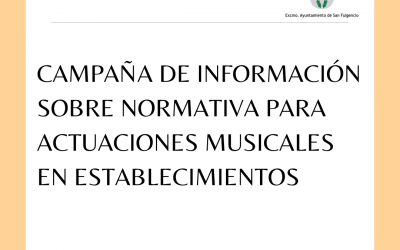El Consistorio y la empresa Hidraqua aplicarán la orden ministerial que obliga a sustituir los aparatos medidores con más de 12 años de antigüedad El Ayuntamiento de San Fulgencio cambiará todos los contadores del municipio que tengan una antigüedad igual o superior a...
Campaña de información sobre normativa para actuaciones musicales en establecimientos
Debido al malestar expresado por parte de los vecinos del municipio ante la ausencia de actuaciones de música en vivo en locales de la zona de urbanizaciones, el Ayuntamiento de San Fulgencio quiere comunicar que la normativa que regula estas actividades en...



